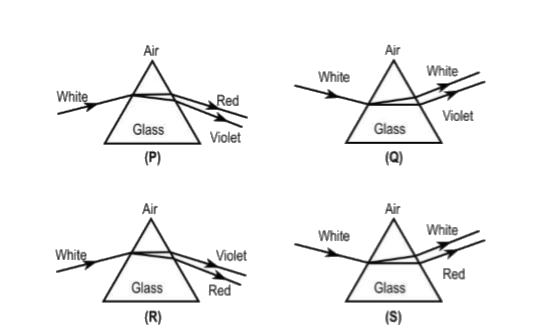Do lights rays actually pass through a real image ?
To answer the question "Do light rays actually pass through a real image?", we can break down the explanation into clear steps:
1. Understanding Image Types:
- There are two types of images formed by lenses and mirrors: real images and virtual images.
- A real image is formed when light rays converge and actually pass through a point.
2. Formation of Real Images:
- Real images are typically formed by converging lenses or concave mirrors.
- For example, when parallel light rays (coming from a distant object) strike a converging lens, they are refracted and converge at a point known as the focus.
3. Light Rays Passing Through a Real Image:
- When the light rays converge at the focus, they continue to travel beyond that point, forming a real image on the opposite side of the lens.
- This means that the light rays actually pass through the location of the real image.
4. Comparison with Virtual Images:
- In contrast, virtual images are formed when light rays diverge.
- The rays appear to come from a point behind the lens or mirror, but they do not actually converge at that point. Thus, light rays do not pass through a virtual image.
5. Conclusion:
- Therefore, we can conclude that yes, light rays actually pass through a real image, as they converge at a point where the real image is formed.
- There are two types of images formed by lenses and mirrors: real images and virtual images.
- A real image is formed when light rays converge and actually pass through a point.
- Real images are typically formed by converging lenses or concave mirrors.
- For example, when parallel light rays (coming from a distant object) strike a converging lens, they are refracted and converge at a point known as the focus.
- When the light rays converge at the focus, they continue to travel beyond that point, forming a real image on the opposite side of the lens.
- This means that the light rays actually pass through the location of the real image.
- In contrast, virtual images are formed when light rays diverge.
- The rays appear to come from a point behind the lens or mirror, but they do not actually converge at that point. Thus, light rays do not pass through a virtual image.
- Therefore, we can conclude that yes, light rays actually pass through a real image, as they converge at a point where the real image is formed.
Topper's Solved these Questions
- REFLECTION AND REFRACTIONBOOK - PRADEEPCHAPTER - REFLECTION AND REFRACTIONEXERCISE - Short Q/A (3 marks)
35 Videos
- REFLECTION AND REFRACTIONBOOK - PRADEEPCHAPTER - REFLECTION AND REFRACTIONEXERCISE - long Q/A
7 Videos
- REFLECTION AND REFRACTIONBOOK - PRADEEPCHAPTER - REFLECTION AND REFRACTIONEXERCISE - long answer question
9 Videos
- MAGNETIC EFFECTS OF ELECTRIC CURRENTBOOK - PRADEEPCHAPTER - MAGNETIC EFFECTS OF ELECTRIC CURRENTEXERCISE - Mock Test
21 Videos
- SOURCES OF ENERGYBOOK - PRADEEPCHAPTER - SOURCES OF ENERGYEXERCISE - Mock Test
20 Videos
Similar Questions
Knowledge Check
An object in which no light rays can pass through is called
AconvexBopaqueCtranslucentDtransparentFor a light ray passing through a prism
Aangle of deviation increases when angle of incidence is increasedBangle of deviation decreases when angle of deviation is increasedCWhen angle of incidence is increased or decreased from a particular value then in both cases angle of deviation increases.DAngle of deviation is approximately proportional to the refracting angle of prism provided prism is very thin.When a ray passes through a prism,
Ait goes undeviatedBit remains parallel to the baseCit bends towards the baseDnone of these
Show that a light ray will pass through an equilateral glass prism (μ=1.5). If the angle of incidence is greater than 30∘.
View SolutionWhat is lateral displacement of a light ray passing through a glass slab ?
View SolutionFind the minimum and maximum deflectrion angls for a light ray passing through a glass prism with refracting angle θ=60∘.
View SolutionThe path of light rays passing through a glass prism is BEST represented by ________

View SolutionOne student is doing experiment to draw to the path of light rays passing through a glass slab. Incidence In all the cases the found that _____
View Solution